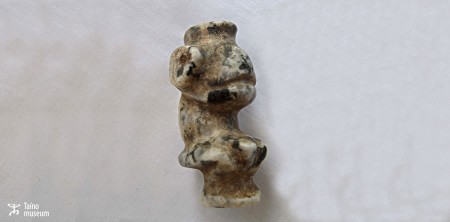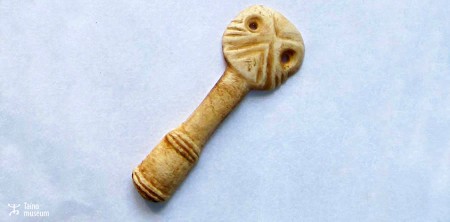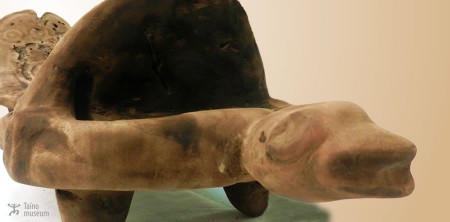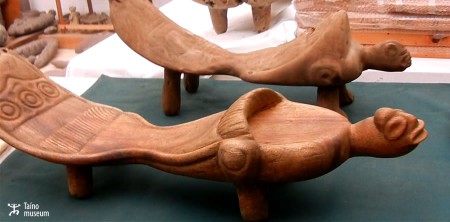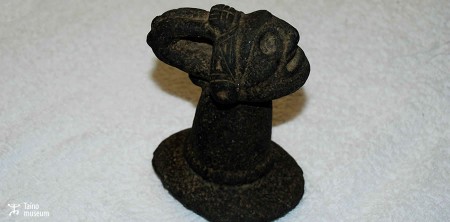Shamans played an important role in Taíno society as medical practitioners, using an hallucinogenic preparation named "Cohoba" to get in trance and to contact the spirits for help to determine the cause of the illnesses. The Shaman recited sacred chants accompanied of maracas to play a rhythm. He produced a stone amulet and which he…
Read more
Small stone zemi
